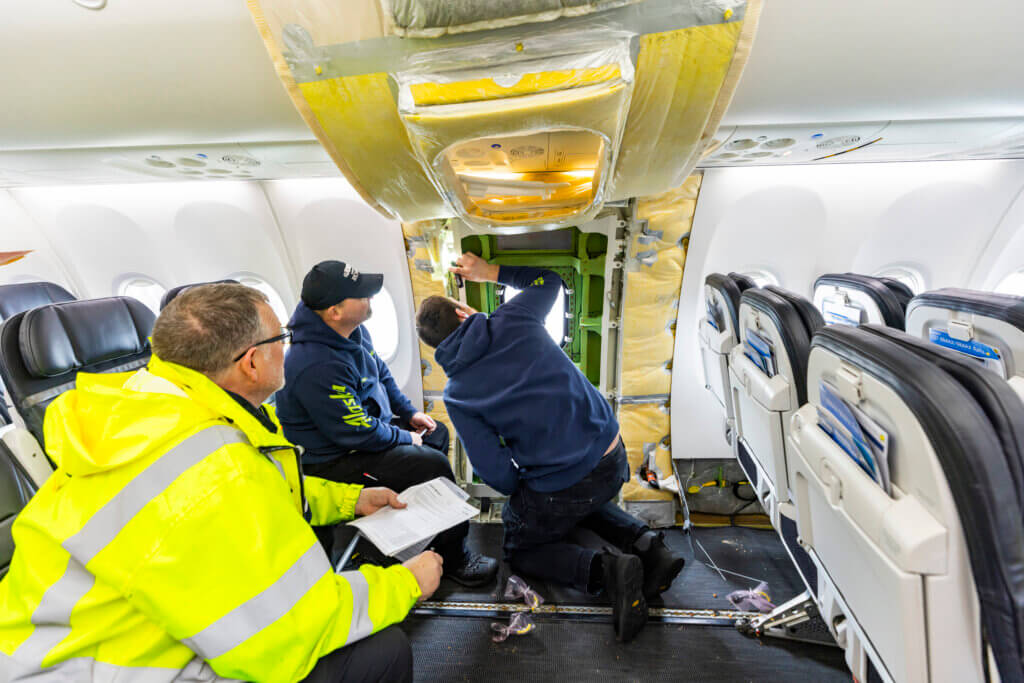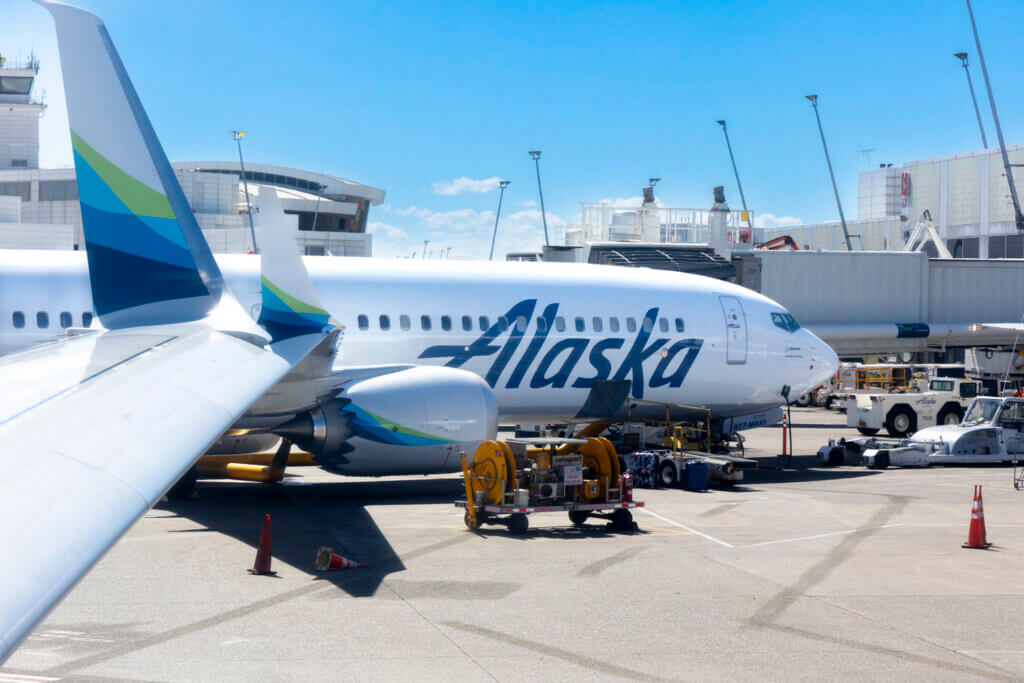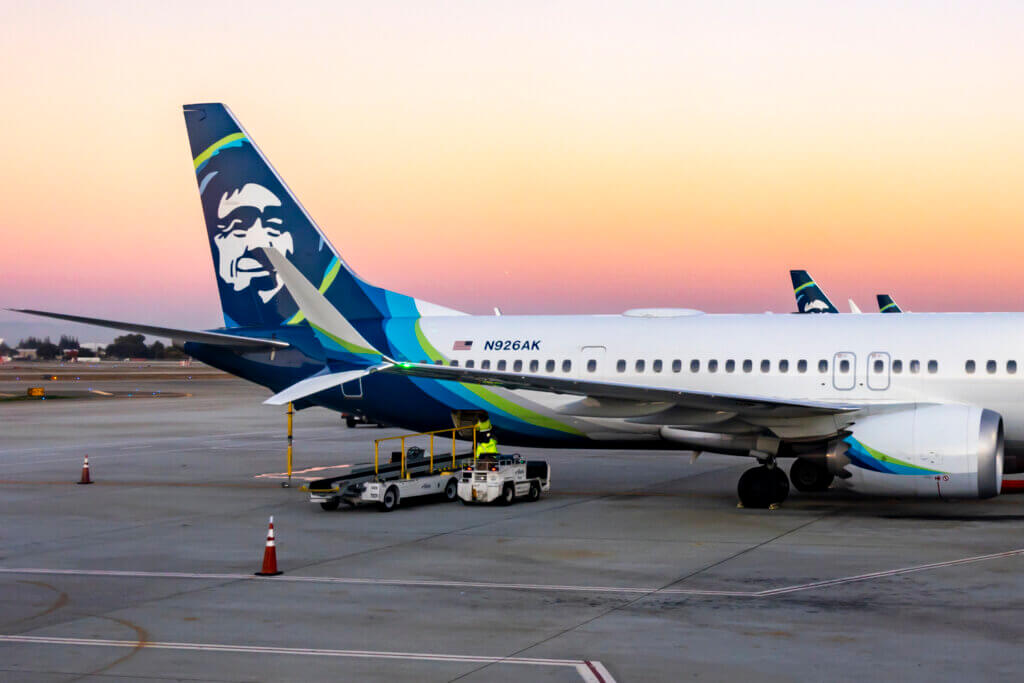The immediate effects of the AS1282 incident is finally coming to a close for Alaska Air and United Air, at least in the U.S as the 737 MAX 9 cleared to resume service after completing FAA-approved inspections and, if necessary, repairs. Of course, if the aircraft still scares you, the airlines have got you covered.
We’ve been discussing what happened with AS1282 quite a bit lately, so I won’t go over the details again. For the latest, you can see my last update on what happened, which will likely be the last major one for a while, as it’ll take the NTSB to complete its investigation and report. Instead, I want to focus on the fact that the 737 MAX 9 is cleared to resume service and what that means for you.
737 MAX 9 is Cleared to Resume Service
On Wednesday, January 24, the FAA approved and published its inspection and maintenance requirements/procedures to return the Boeing 737 MAX 9 to the skies. On Thursday, January 25, Alaska Air’s maintenance team began inspecting their 65 jets, which they are expect to take 12 hours each. Per Alaska Airlines, that work goes as such:
- Before opening the mid-cabin door plug, we will confirm it was properly installed by ensuring all hardware is in place and all clearances are measured and recorded
- We will then open the door plug and inspect for any damages or abnormalities to the door and seal components, including the guide fittings, roller guides and hinges, and inspect nut plates and fasteners
- We will resecure each door plug and ensure it is sealed properly per approved FAA guidance before the aircraft is returned to service
- Each inspection, including recording detailed measurements of hardware location, could take at least 12 hours for each aircraft

Following this comprehensive inspection, Alaska Air is putting their birds back into service, with the first few re-entering service this past Friday. Getting all of the MAX 9s back in the air is expected to take about a week.
United has said that it will begin retiring their MAX 9s to service on Sunday, January 28.
Should I Be Concerned About the MAX 9?
Honestly, with the FAA-mandated inspections completed by the airlines’ own maintenance teams, the FAA’s desire to avoid more negative press, and the airlines’ own desire for passengers to feel safe, I don’t think there’s anything you need to worry about when flying on these aircraft. In fact, they are now safer than when they were delivered, since a new set of eyes were put on the shoddy work done by Boeing/Spirit.
Of course, it’s important to remember that the issue behind AS1282 was a manufacturing one – not an engineering one. But what about MCAS? Well, that was quite a while ago now, right? And that issue received an FAA-mandated fix. Never mind that no U.S. operator had a fatality because of it, largely because they all opted for the optional redundant sensor and because American pilots are more experienced than some low-cost foreign operators and new exactly how to counteract the issue without breaking a sweat. So, yeah, in my opinion, there’s really not anything to worry about.
But, what about aircraft fresh off the line? Well, I’m willing to bet the airlines aren’t trusting Boeing that they’re delivering planes with properly installed door plugs, so this is going to be a non-issue as well. In fact, Alaska Airlines is sending its own audit team to Boeing’s Renton factory to assist in the inspection of each aircraft delivered to them. I guess it helps that their headquarters is nearby!
What If I Don’t Want to Fly a MAX 9?
Even though the FAA has taken its time to come up with a safe way to return these birds to the sky, I know there are quite a few people that aren’t happy that the 737 MAX 9 is cleared to resume service. Heck, I’ve read people saying that they won’t fly Boeing aircraft at all anymore. To me, that’s completely irrational, as Airbus aircraft have had their fare share of scary issues, too. Including those that caused large losses of life. But to each their own.
So if you want to avoid these jets now that the 737 MAX 9 is cleared to resume service, you’ll want to look at what aircraft is operating the flight you’re looking at. Bear in mind, this can change at the last minute, so even after you book, you’ll want to check. To do so, you’ll need to click into the “flight details” section or similar and find the aircraft type. the MAX 9 will say something along the lines of:
- Boeing 737 MAX 9
- Boeing 737-9 MAX
- B739M
- B379MAX
- or some variation there of
It’s worth noting that the Boeing 737-900 is not the same, and also goes by the B739, so don’t get these two confused.
As far as what to do if you’re booked onto a MAX 9 flight, well, Alaska Airlines is letting you rebook at no additional cost.
737 MAX 9 is Cleared to Resume Service, Final Thoughts
Though I have no plans to travel out-of-state any time soon, I for one am glad that the 737 9 MAX is cleared to resume service. The type makes up 20% of Alaska’s mainline fleet and the grounding has been absolutely wrecking havoc on their schedule. Personally, I wouldn’t hesitate to jump aboard an Alaska Air Boeing 737 MAX 9 (or a United one, for that matter), too. Everyone involved has got too much to lose. And though you may not trust Boeing, remember, they didn’t conduct the inspection work or repairs on these already delivered planes.
But if you don’t trust the maintenance team of the airline itself, then, perhaps, you shouldn’t fly that airline at all. I trust Alaska, thus I have no issue flying a MAX 9 with them.


